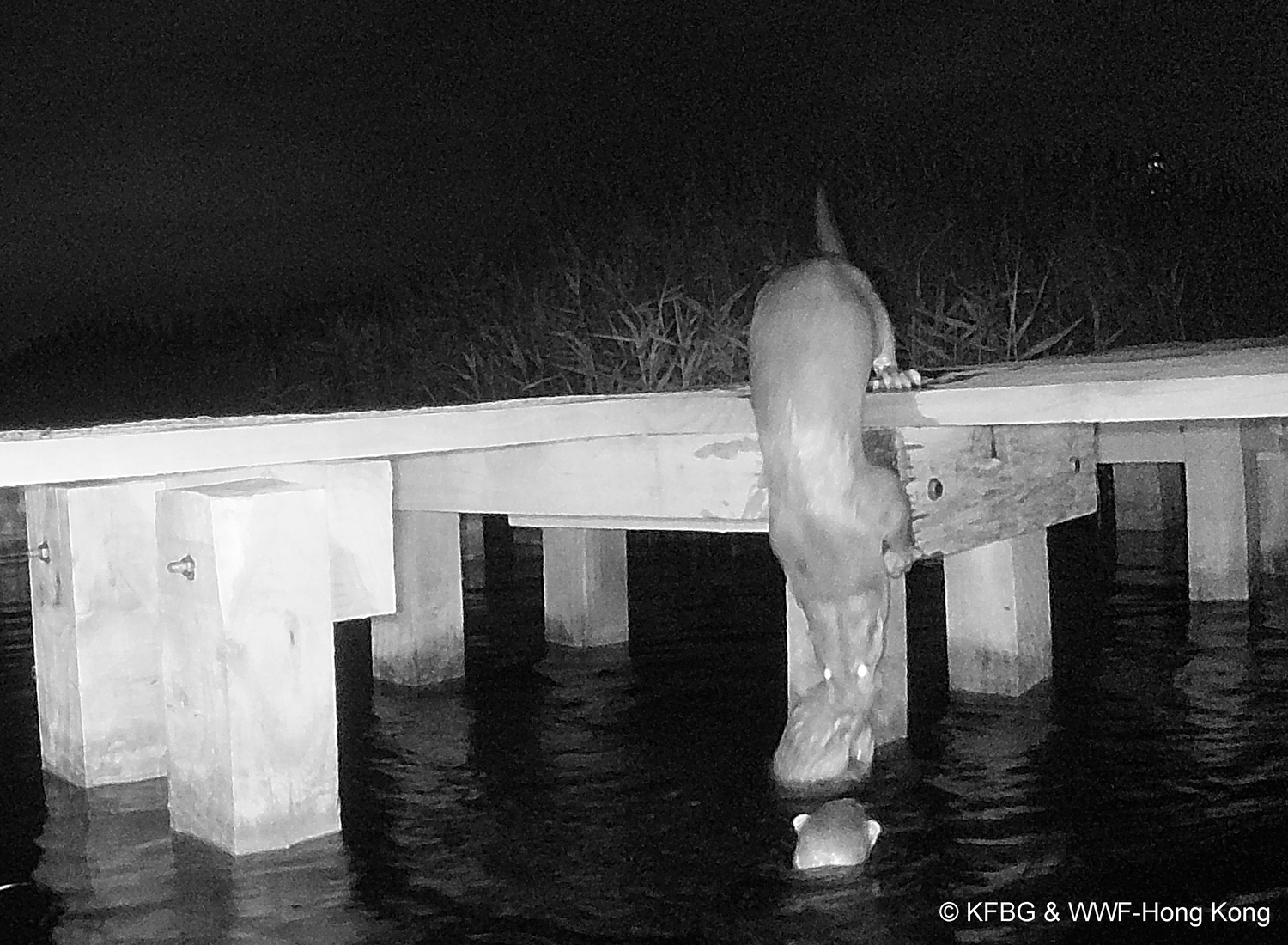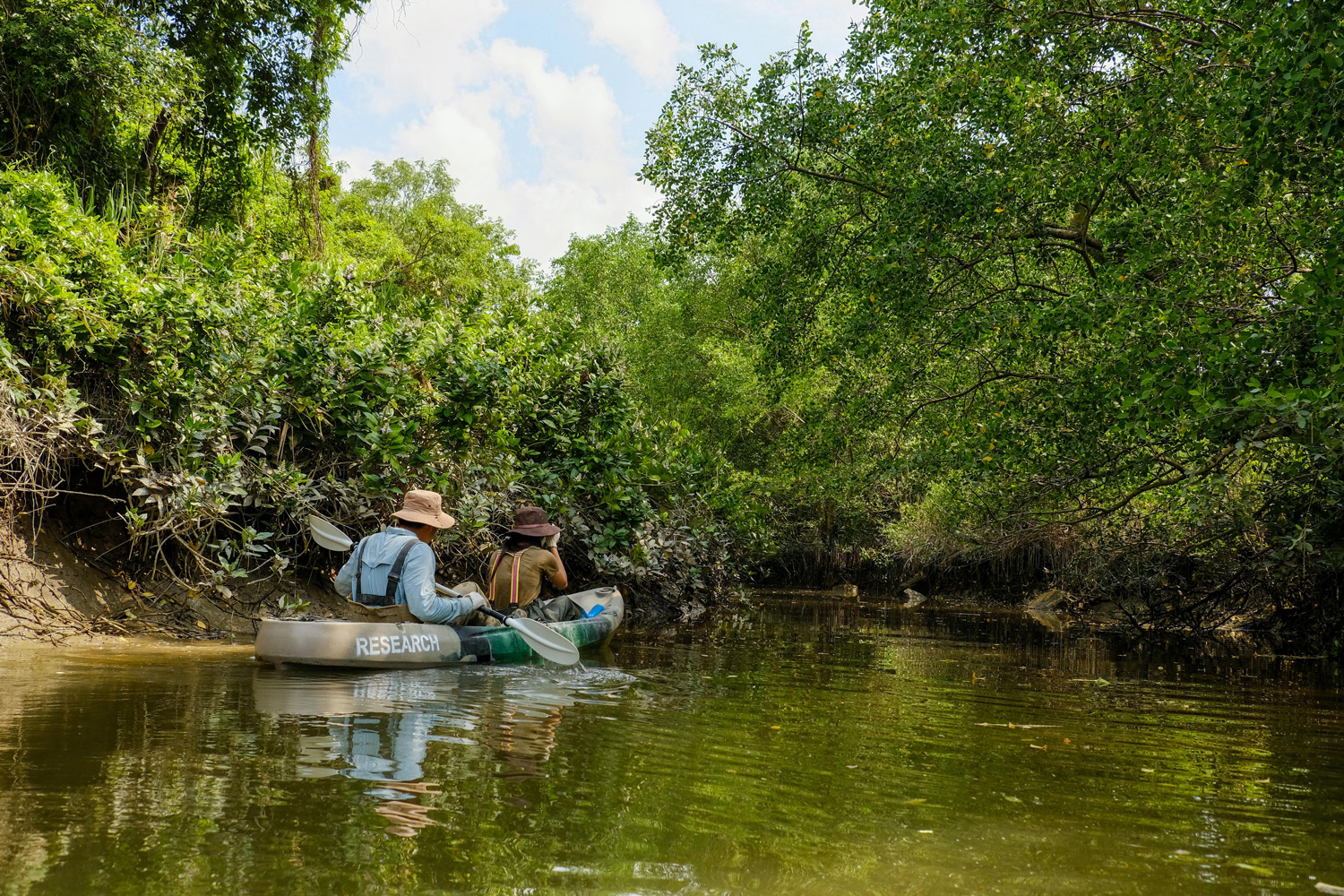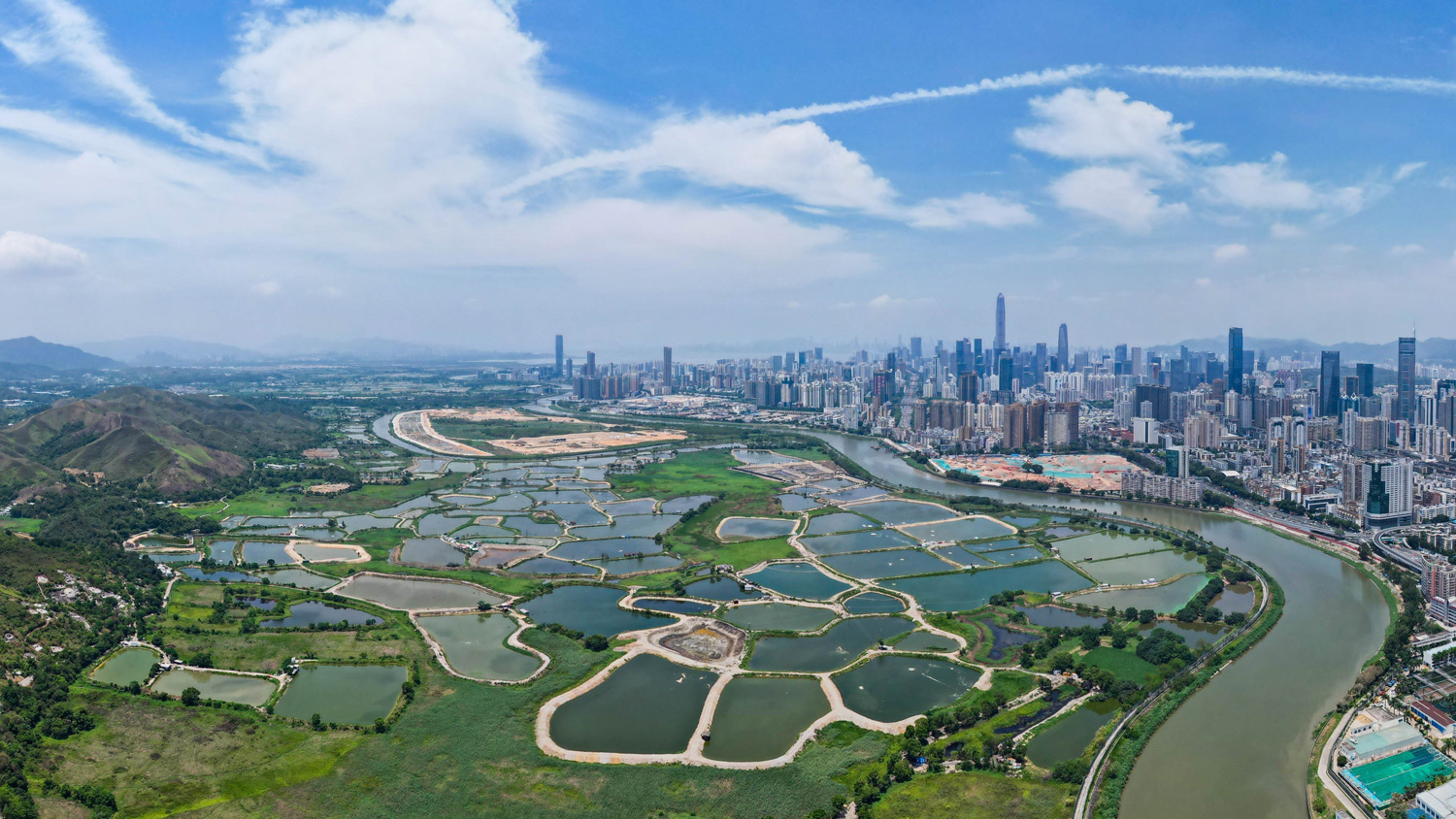New Study Shows Impending Otter Extinction Crisis in Hong Kong
New Study Shows Impending Otter Extinction Crisis in Hong Kong
@kfbg.official #KFBG
High-resolution images, please download from: https://bit.ly/3ZSpDq2
(HONG KONG, 17 October 2023) Otters are top predators in many aquatic ecosystems and are indicator species of ecosystem health. Although populations of the Eurasian Otter (Lutra lutra) are gradually recovering in many European countries, their survival in Asia is not assured. A study recently published in the international conservation journal Oryx (https://bit.ly/45tRVsh) demonstrates that this iconic amphibious mammal has undergone a precipitous decline in Hong Kong since the 1930s, and failed to recover as in the case of many local mammal species.

An otter mum with two cubs camera-trapped in Mai Po Nature Reserve, the only local site with confirmed breeding otters.
Photo: Kadoorie Farm and Botanic Garden & WWF-Hong Kong
Conservationists from Kadoorie Farm and Botanic Garden (KFBG) scoured all local otter records from newspapers, archived documents and other publications to detail changes in the abundance and distribution of the Eurasian Otter in Hong Kong between 1890 and 2020. By analysing the 131-year dataset, it is confirmed that the species was much more widely distributed across the western waters of Hong Kong in the past, having been documented from various areas of the New Territories and some offshore islands; the first historical record was from the busy Victoria Harbour of Hong Kong Island. However, its numbers began to drop from the 1930s and has been hovering at the edge of local extinction since the 1960s.
Michael Hui, lead author of the paper and Conservation Officer at KFBG, says: “This study, using extensive historical literature sources, provides valuable insights for local otter conservation and research as it helps fill the knowledge gaps about where otters have existed and how they vanished in Hong Kong.”

The local otter is strongly associated with coastal and floodplain wetlands, most of which are unprotected and prone to land-use change. The population boom and rapid urbanisation have resulted in substantial habitat loss, coupled with severe water pollution and extensive river channelisation work, these have been and remain the major threats to the survival of local otters. The otter is now largely restricted to the Deep Bay area of northwest New Territories; however, apart from the Mai Po Nature Reserve and the nearby Hong Kong Wetland Park, most of its habitats are unprotected and privately owned,” he says.
“Our research suggests that the Yuen Long floodplain has always been a critical habitat for the local otters over the past century, and has been their last stronghold in the last five decades. The Northern Metropolis development plan will drastically alter the rural landscape of this floodplain to the detriment of otters. If we want to save the last otters of Hong Kong, it is imperative we balance economic development and nature conservation, ensuring areas important to otters are preserved and interconnected,” says co-author Dr Bosco Chan, Conservation Director of WWF-Hong Kong and Continental Coordinator for East Asia of the IUCN SSC Otter Specialist Group.

Otter habitats in the proposed Northern Metropolis against the skyscrapers of neighbouring Shenzhen
Photo: Kadoorie Farm and Botanic Garden
“Conserving the Eurasian Otter and its wetland habitats must be a conservation priority for Hong Kong, and the plight of the local otter needs to be widely publicised to garner stakeholders’ support and galvanise immediate conservation actions across society,” Chan says.
“The Eurasian Otter is probably the rarest terrestrial mammal in Hong Kong, even in the whole Greater Bay Area. In view of this, KFBG has made continuous efforts to protect this iconic species in the region in recent years. Since 2020, we have partnered with WWF-Hong Kong to study otters in Mai Po and the surrounding area, which is the only site with confirmed breeding otters in the region. The long-term monitoring of this population is important as it can help to guide conservation actions and raise public awareness to prevent the local extinction of the Eurasian Otter,” adds Yang Jianhuan, in charge of the otter project and Conservation Manager at KFBG.

(Hui & Chan 2023)
Citation:
Hui, M. K. Y. & Chan, B. P. L. (2023). Analysis of a 131-year longitudinal dataset of the
Eurasian otter Lutra lutra in Hong Kong: implications
for conservation. Oryx–– The International Journal of Conservation. DOI: https://doi.org/10.1017/S0030605323001163https://bit.ly/45tRVsh
About Kadoorie Farm and Botanic Garden (KFBG)
Kadoorie Farm and Botanic Garden (KFBG) is spread over 148 hectares of land on the northern slopes of Tai Mo Shan, Hong Kong's highest mountain, near the town of Tai Po. Formerly known as the Kadoorie Agricultural Aid Association (KAAA), established in 1956, it gradually transformed in the later period to focus on science-based species conservation and ecosystem restoration, and has become a precious conserved area where the public can experience and connect to nature. On the slopes, there are live animal displays areas, theme gardens, terraced farms, and conservation and educational facilities. Through nature conservation, diverse and holistic education, and sustainable living projects, we try to harmonise our relationship with the environment and live sustainably with respect for each other and nature.

